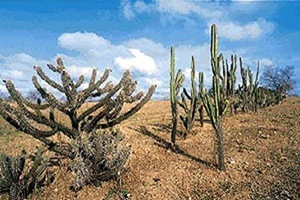The Northeast region of Brazil consists of nine States: Maranhão, Piauí, Ceará, Rio Grande do Norte, Paraíba, Pernambuco, Alagoas, Sergipe and Bahia. The region covers an area of 1,554,257 km2, which is home to around 53,081,950 inhabitants, being the second most populous in the Brazilian territory. The northeastern population is ethnically composed of 62.5% of browns; 29.2%, white; 7.8% black and 0.5% indigenous.
Although the region has a high absolute population, there are demographic gaps. Thus, the demographic density reflected by this population is 34.1 inhabitants per square kilometer.
The Northeast region presents a huge irregularity regarding the demographic distribution within the territory, so that there are very populated States and others not so much. In addition, most of the population of Northeastern States concentrates its inhabitants in the large urban centers that settle in coastal areas. The most populous units in the Northeastern Federation are: Bahia, Pernambuco and Ceará, which account for 60% of the region's total population. And they present, respectively, the following demographic density: 24.8 inhab./km2, 89.6 inhab./km2 and 56.7 inhab./km2. Along the northeastern coast there are approximately 32 million people, considering that the largest cities are in this range.
Do not stop now... There's more after the advertising ;)
By Eduardo de Freitas
Graduated in Geography
Would you like to reference this text in a school or academic work? Look:
FRANCISCO, Wagner de Cerqueira and. "Population of the Northeast"; Brazil School. Available in: https://brasilescola.uol.com.br/brasil/populacao-nordeste.htm. Accessed on June 28, 2021.



